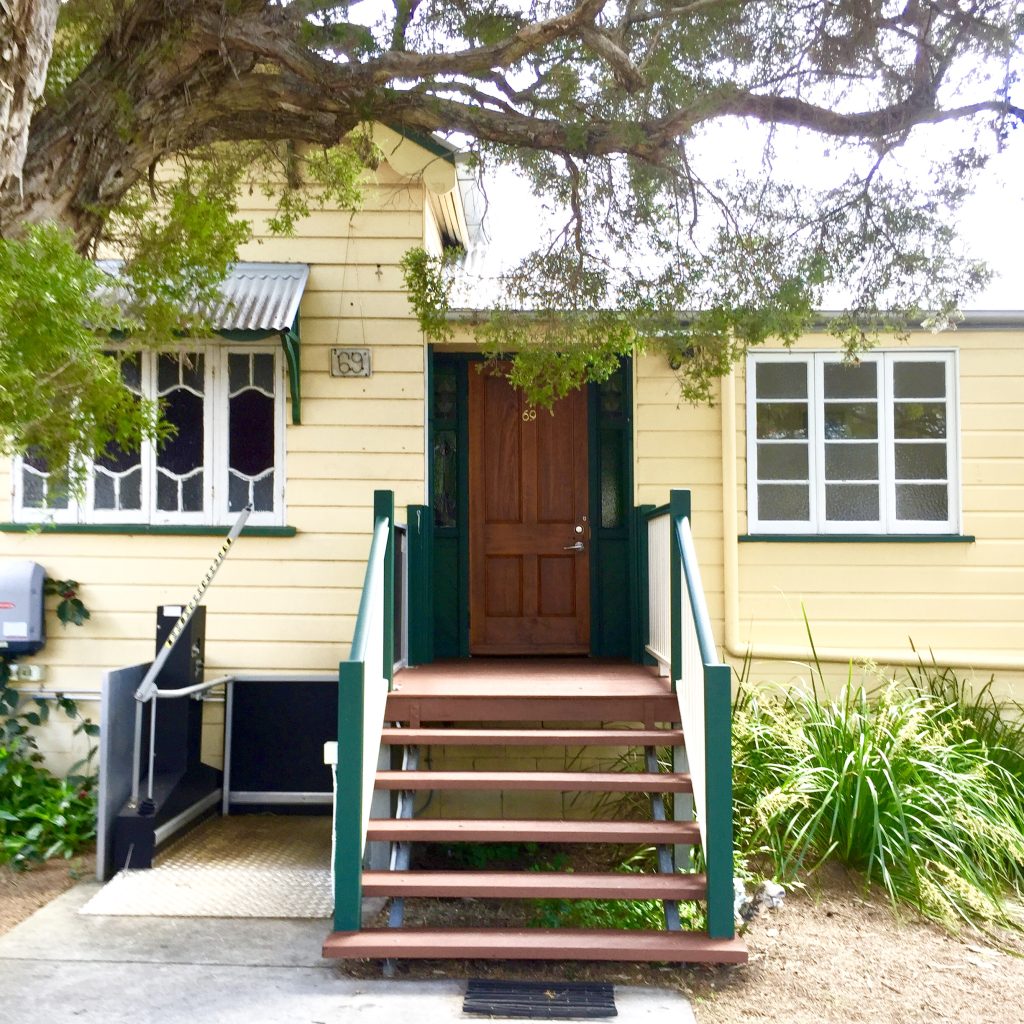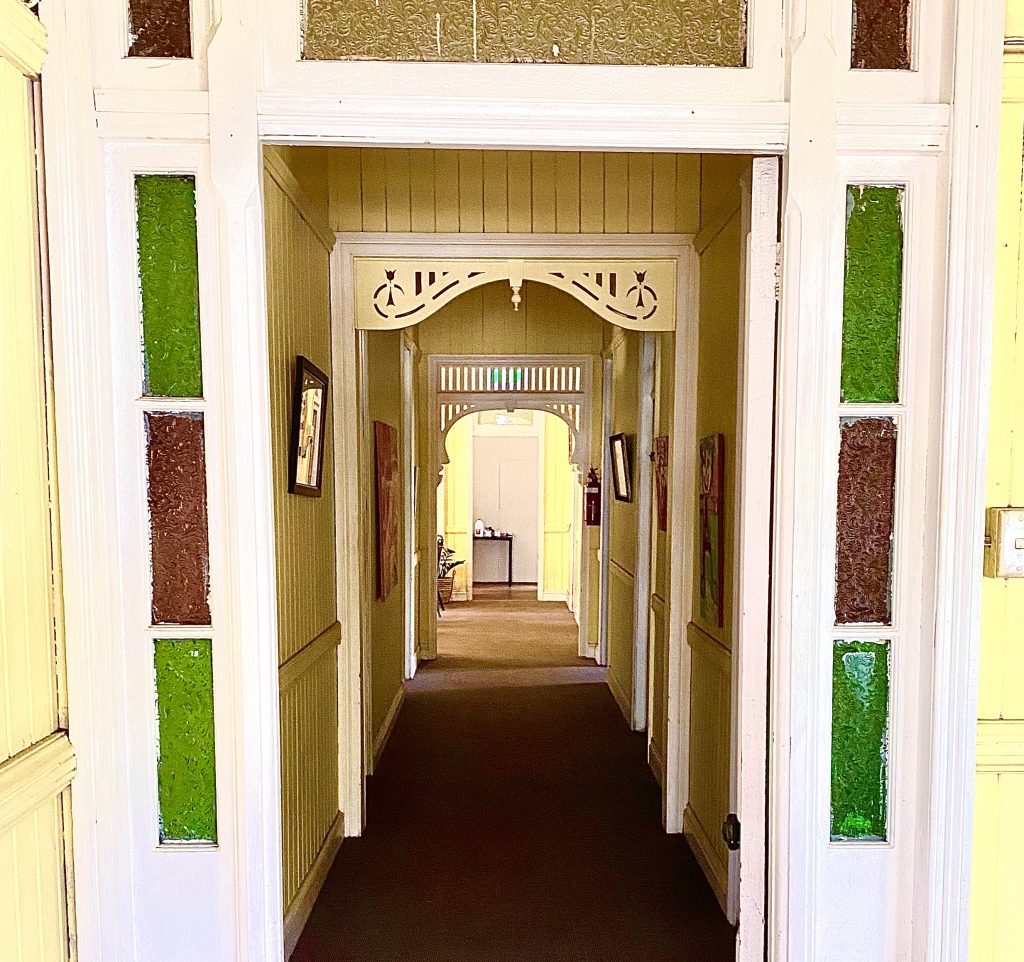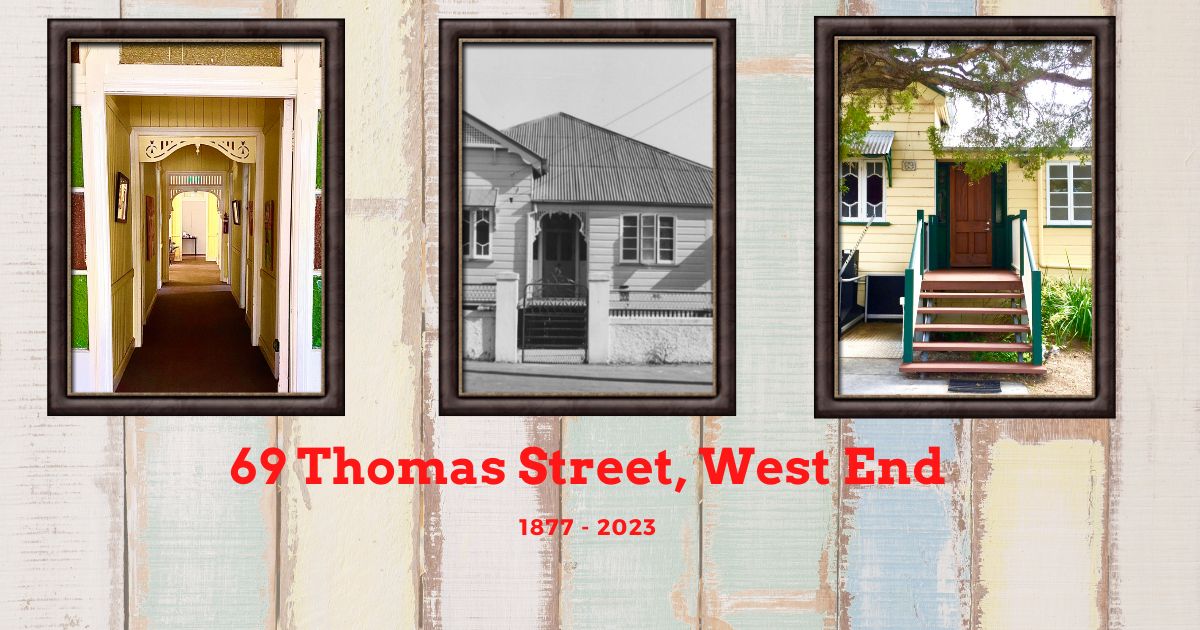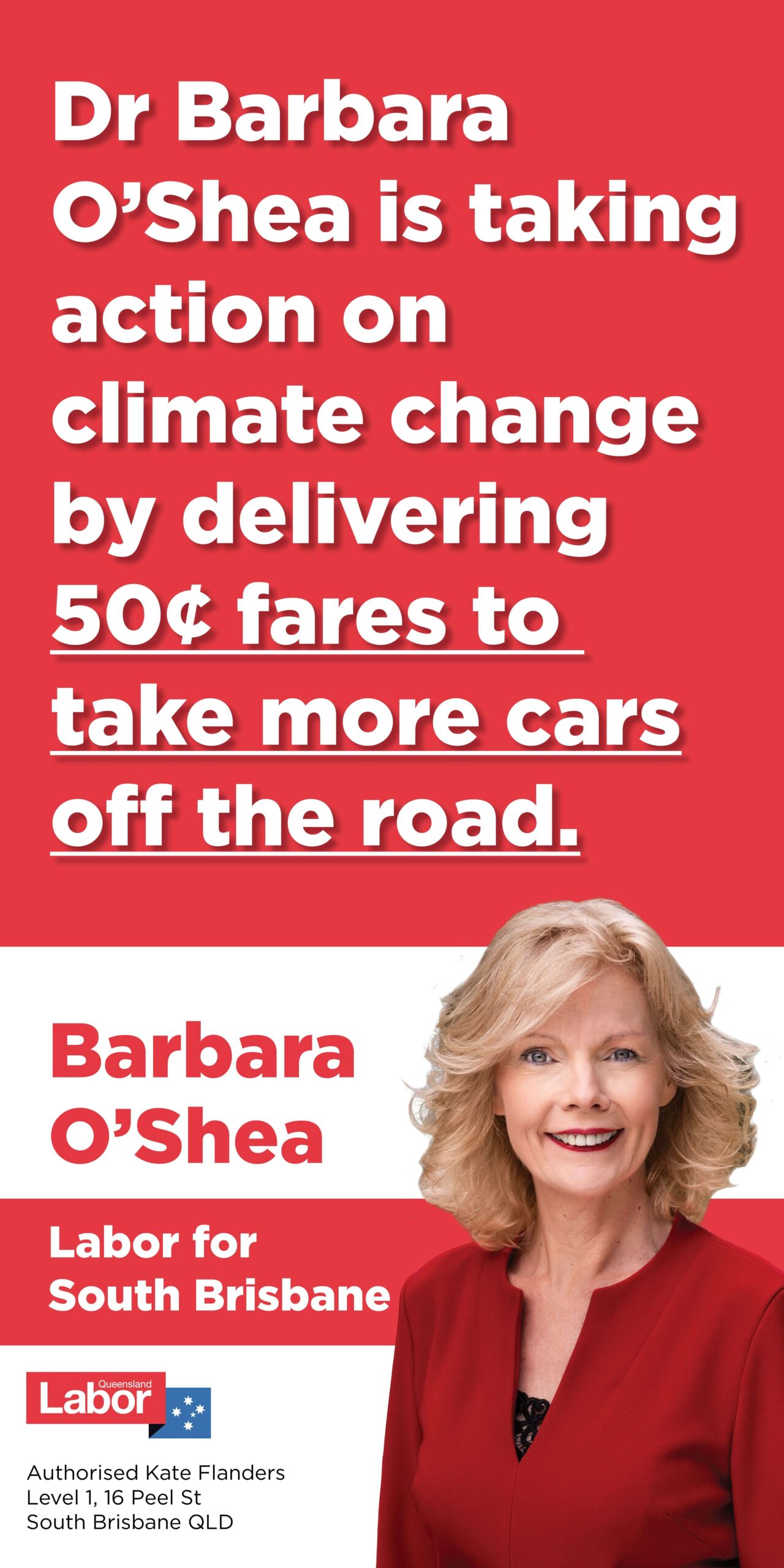Robyn O’Loghlin takes us on the historical journey of a little house in Thomas Street, West End. What was once a small private hospital, and later home to a Christian community, is now a thriving community meeting place.
I rinse the coffee pot out and place it on the drainer. Beside me, Rob dries the last of the mugs with a well-worn tea-towel, and Sannie gives the heavy pine table a final wipe-over in the dining area.
The meeting is over, a cheerful time of discussion and laughter with one of the many groups that regularly use the building, and a few others have lingered to chat a bit longer in the lounge room before heading home. We check the calendar on the way out – today it was a gathering of our local community network, tomorrow there will be a mental health support group, and the day after that a men’s group will be sharing the journey of life.
This is 69 Thomas Street, a community hub that from the outside looks much the same as any other old West End home, with timber boards, a corrugated iron roof, a small gable, and inside, high-ceilinged rooms ventilated with patterns of timber above the doors. However, few West End locals realise that this modest structure has in its long history served as a maternity hospital, then dedicated sewing rooms, then serviced rooms, and for the past fifty years has functioned as a thriving centre for community groups.

The land on which the house stands was cared for by indigenous peoples long before white settlers claimed it. The first to officially do so was British migrant James Prudence, who purchased the lot in 1877 and in due time built a cottage on the land. In 1904 he transferred the title to his daughter Ellen, and on the death of her father six years later, Ellen, clearly an enterprising woman, decided to establish a new business venture. The lot was mortgaged for £300, enough to pull down the cottage and build a small private hospital – perfect for Ellen and her sister Mary, both trained nurses, who in 1913 registered as midwives and began to practice at ‘St Monica’s’.
The hospital was one of many established in Brisbane in that period – the number of private hospitals increased from only 10 in 1910 to 60 by 1930. The building had – and still has – six private rooms, a delivery room (now gone) and other shared living spaces. With the open fretwork above the doors there would have been little privacy, but no doubt plenty of connection and support.
St Monica’s served the community for several decades, until a new facility was built in 1938 in Herston. Expectant mothers across the city looked forward to a range of specialist support services at the modern Women’s Hospital. Ellen, then 62 years old, felt that her days of formal midwifery were coming to an end, and St Monica’s ceased operations in the early 1940s, though Ellen and Mary continued to live there for the next two decades.
In the mid-1960s it was time for a new role for the property. Ellen moved to a nursing home, a seamstress leased the house, and for six years each room was occupied by a sewer. Then in 1971, after almost 100 years in the Prudence family, the lot was sold to new owners. The following year, the Laskaris family converted the property to serviced rooms and rented them out. It was a different kind of community than the hospital days, but no doubt hearty meals were still shared in the old dining room, with all manner of conversations up and down the hallway.


In the same year that the house was being converted, 1972, a Christian community called House of Freedom formed in Brisbane, and it was this group that was to give the house its next phase of life. House of Freedom took over the property in 1978 and, with enthusiasm for spirituality and social justice, initiated programmes and activities as diverse as crisis accommodation for young people, peace actions, leather work and craft groups, a local food co-op, a monthly journal, and (instant!) coffee mornings.
House of Freedom operated for many years in Thomas Street, then in 2006 the house was up for sale again. Concerned at the potential loss of so many significant community-building activities, a group of local friends and investors came together to purchase the house and place it under the management of the Community Initiatives Resource Association (CIRA), a local group formed back in 1993 to empower and provide resources to those working to build community. The house continued as a place of kindness and connection.
If you drop into 69 Thomas Street these days you never know what you might find. It could be a small group providing each other with mutual support as they talk through the journey of life. It could be passionate people from the Food Not Bombs initiative, chopping garlic and onions to make an aromatic meal which they will take down to Boundary Street to share with anyone in need. Or it might simply be a couple of locals enjoying the shade at the tables and chairs outside.
Currently a number of small enterprises or locals rent the rooms of the house to conduct activities, a dozen or so different community groups use the space, and the house continues to function as a hub of support, connection, and care for those who meet within its walls.
Rooms in the house are available for rent by small businesses or community groups, and the common areas of the house are available for use by community groups by donation. All are welcome to approach CIRA for further information.
CONTACT
If you or your community group is looking for a space to meet, contact Neil: neilbarringham@hotmail.com or Sannie: sannie@onthenet.com.au .
FURTHER INFORMATION
Notices in local papers of the time record the births there:
STAFFORD — On the 15th of May, at St. Monica’s Private Hospital, Thomas-street (Nurse Prudence, A.T.N.A.), to Mr. and Mrs.Val. Stafford, Boundary-street—a daughter.
WARNOK — On the 10th May, at St. Monica’s Private Hospital, Thomas-street,West End (Nurse Prudence, A.T.N.A.), to Mr. and Mrs. J. Warnok, Sylvan-road, Toowong—a son.)
Images of the house supplied.



Well done.